What weapons does Russia have in Syria to withstand the "rain" of missiles from the US?; Has Mr. Assad fled the capital?
(Baonghean.vn) - What weapons does Russia have in Syria to withstand the "rain" of missiles from the US?; Has Mr. Assad fled the capital and hidden in Russian fortifications?; China suddenly made another move to "back" Russia amid the tension in Syria;... are the outstanding international news of the past 24 hours.
1. What weapons does Russia have in Syria to withstand the "rain" of missiles from the US?
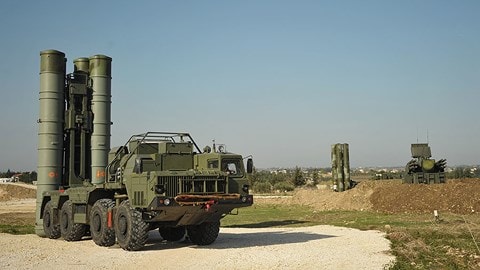 |
| Russian S-400 air defense missile system at Hmeymim base. |
Russia's announcement that it is ready to respond to any US military attack on Syria has led experts to question what weapons Moscow has to stop the "rain" of missiles from Washington.
Specifically, the Russian military is stationed at two bases in Syria: the Hmeymim air base near the northern port city of Latakia and the naval base in the northern coastal city of Tartus. Both of these areas are equipped with Russian long-range surface-to-air missiles.
Of these, the S-400 missile systems have been deployed by the Russian army near the Hmeymim base and the S-300VM missiles are responsible for protecting the Tartus base. Both of these missile systems have an operating range of up to 400 km. Currently, the two Russian S-400 and S-300VM missiles are considered the most modern long-range missile defense systems in the world.
In addition, Russia is currently using early warning and control systems such as the A-50 airborne early warning radar system in Syria. Notably, Russia's air defense system is also integrated with weapons produced by the former Soviet Union that the Syrian army is using.
Therefore, if the US deliberately penetrates Russia's defense system in Syria with a "rain" of missiles, the effectiveness of this attack will still be significantly reduced.
2. Mr. Assad fled the capital and hid in Russian fortifications?
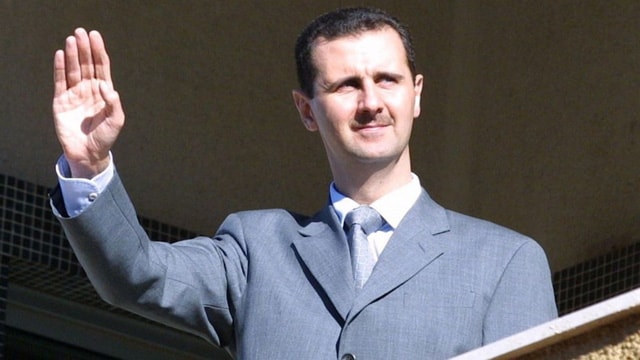 |
| Syrian President Bashar al-Assad stands on the balcony of the presidential palace in the capital Damascus. Photo: AFP |
NewspaperMirrorBritish media on April 13 quoted sources saying that Syrian President Bashar al-Assad is currently hiding inside a Russian military bunker amid the increasing risk of Syria being "shot" by the US military.
If the US and its allies do carry out Mr Trump's threat to fire "nice, new and smart" missiles at Syria, the Assad regime's suspected chemical weapons production and storage facilities could be a prime target.
However, Syrian military bases, intelligence agencies and even Mr. Assad's private residence are assessed to be on the list of possible targets for "missile rain" from the US and its allies.
On the evening of April 12, reports emerged that Mr. Assad had left the Presidential Palace in the capital Damascus, accompanied by a Russian military escort for protection.
The Baghdad Post said it had seen images showing Mr Assad at a fortification at Russia's Khmeimim base, on Syria's western coast.
3. China unexpectedly makes another move to "back" Russia amid tensions in Syria
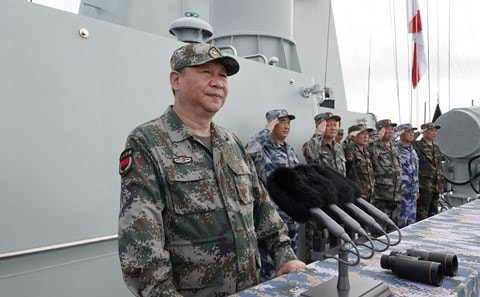 |
| Chinese leader and Commander-in-Chief Xi Jinping arrived in Hainan Island to inspect a naval parade on April 12. |
In a surprise move, Beijing announced on April 12 that the Chinese military will conduct live-fire drills in the Taiwan Strait next week. The exercise is seen as a show of China's political support for Russia.
The news of China’s live-fire drills next week came just hours after Chinese leader and military commander-in-chief Xi Jinping arrived on Hainan Island to inspect the country’s largest-ever naval parade, an event aimed at showcasing the US Navy’s capabilities against its formidable rival, the United States.
Macau-based military expert Antony Wong Dong said that military conflict between the US and Russia in Syria could “explode at any moment” and the drills in the Taiwan Strait were aimed at demonstrating the strategic partnership between Russia and China amid international public opinion being drawn into the crisis in Syria after US President Donald Trump threatened a military strike against President Bashar Assad’s forces.
4. Russia launched a "diversionary move" before the US warning of a military attack in Syria?
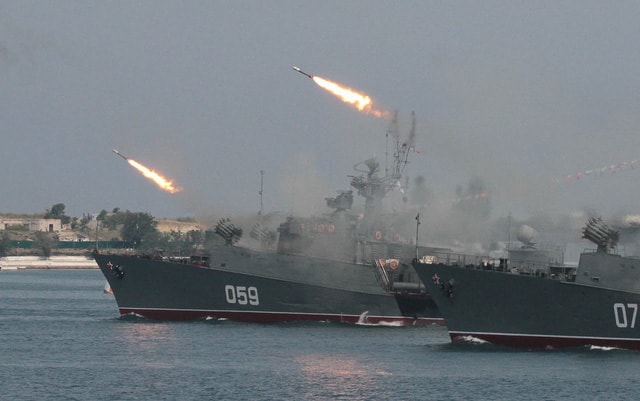 |
| Russian naval ships launch missiles during an exercise. Photo: Reuters |
The US intelligence agency ISI released satellite images on April 11 showing that Russia has moved 11 warships, most of its warships, to the Tartus naval port in Syria. Moscow is believed to have left only a Kilo-class submarine at Tartus - one of the two most important military bases leased by Russia from Syria.
The move by Russia came shortly after President Donald Trump warned Moscow to “get ready” as “nice and new and smart” US missiles were about to fly to Syria. Russia had also previously announced that it would shoot down any missiles flying towards Syria.
The US Navy recently announced that it had deployed the USS Harry S Truman aircraft carrier strike group to the Middle East. Previously, aircraft carriers were often used by Washington to conduct airstrikes against members of the self-proclaimed Islamic State (IS) in Syria and Iraq. In addition to the aircraft carrier, the US is currently deploying two guided-missile destroyers, the USS Donald Cook and the USS Porter, in the Mediterranean.
According to the BBC, a Royal Navy submarine equipped with Tomahawk cruise missiles was also deployed to the Eastern Mediterranean. Compared to US aircraft carriers, Russian warships are less modern, but the advanced anti-ship missiles equipped on Russian ships can still pose a certain threat to Washington.
5. Stadium bombing in Somalia, many dead and injured
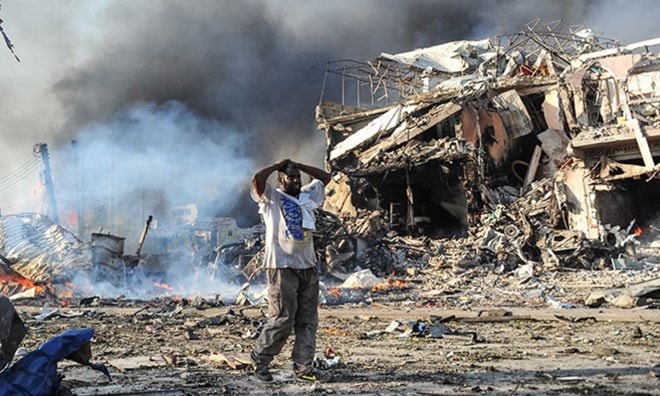 |
| Photo is for illustration purposes only. Source: newvision.co.ug |
Somali police said on April 13 that a bomb explosion at a stadium in the south of the country killed five football fans and injured dozens of others.
The bomb explosion occurred on the afternoon of April 12 in the town of Barawe, Lower Shabelle region during a football match.
According to police, the bomb may have been detonated remotely and the Islamist militant group Al Shabaab is suspected of causing the explosion. The target of the bombing was Somali officials, but at the time of the football match, they were not present at the stadium.
6. Syria reveals country supporting chemical attack in Douma
 |
The chemical agents used in the military conflict in Syria were smuggled from Libya with the help of Britain, Saudi Arabia, the United States, Türkiye and France.
"Terrorists obtained toxic chemicals from Libyan warehouses. This operation was given the green light by Turkish intelligence, Saudi intelligence, and the US and French intelligence agencies," Tass quoted Bashar Ja'afari, Russia's ambassador to the United Nations.
According to the Syrian envoy, the smugglers of chemicals from Libya to Istanbul via civil airlines. The person responsible for transporting these chemicals is a man named Haitham al-Qassar.
The Syrian diplomat stressed that the Damascus government "has denied 1001 times" that it has not used any chemical agents to attack its people.
"And we have provided all the necessary and required evidence to justify that. It is time to understand and transform what we say," added Bashar Ja'afari.
7. Thailand approves the establishment of 30 new parties
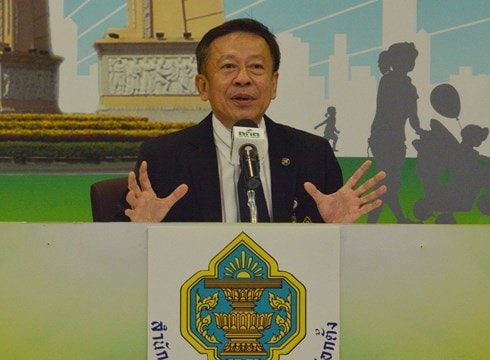 |
| Secretary General of the Election Commission of Thailand (EC) General Jarungwit Phumma. Photo: National Interest. |
Thailand's Election Commission (EC) Secretary General General Jarungwit Phumma said on April 12 that a total of 30 new political parties have been approved so far.
These parties can hold general meetings, but must report the time, location, and content of the meeting to the National Council for Public Order (NCPO).
At the end of 2017, Thai Prime Minister Prayut Chan-o-cha, who is also Chairman of the National Security Council, signed Decree No. 53/2017, allowing the registration of names and logos for the establishment of new political parties from March 2. By April 3, a total of 98 new political parties had registered, of which only 30 were approved.
These parties are allowed to organize activities such as registering members and collecting membership fees. According to regulations, within 6 months of receiving the approval letter, each party must attract at least 500 members and pay one million baht to be eligible to participate in the election scheduled for February 2019./.
